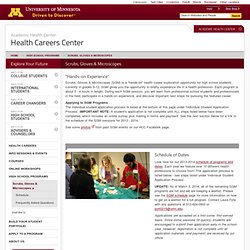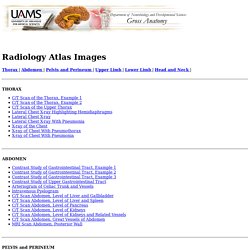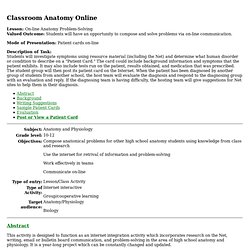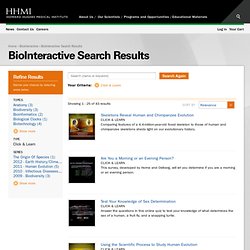

Heart. Anatomy Drill and Practice. CellCraft. Nervous System. UMN Health Careers. "Hands-on Experience" Scrubs, Gloves & Microscopes (SGM) is a “hands-on” health career exploration opportunity for high school students currently in grades 9-12.

SGM gives you the opportunity to briefly experience life in a health profession. Each program is about 3 - 4 hours in length. During each SGM session, you will learn from professional school students and professionals in the field, participate in a hands-on experience, and discover important next steps for pursuing the featured career. Applying to SGM Programs The individual student application process is listed at the bottom of this page under 'Individual Student Application Process'. See some photos from past SGM events on our HCC Facebook page. Look here for our 2013-2014 schedule of programs and dates. UPDATE: As of March 3, 2014, all of the remaining SGM programs are full and we are keeping a waitlist.
Applications are accepted on a first-come, first-served basis. To register for a session: 1. 2. 2a. National Center for Case Study Teaching in Science (NCCSTS) Gross Anatomy X-ray Atlas. Thorax| Abdomen| Pelvis and Perineum| Upper Limb| Lower Limb| Head and Neck| PELVIS and PERINEUM HEAD and NECK Copyright © 2005, Department of Neurobiology and Developmental Sciences, University of Arkansas for Medical Sciences.

Unauthorized use is prohibited. The Nobel Prize in Physiology or Medicine – Educational. Classroom Anatomy Online. Lesson: On-line Anatomy Problem-SolvingValued Outcome: Students will have an opportunity to compose and solve problems via on-line communication.

Mode of Presentation: Patient cards on-line Description of Task: Students will investigate symptoms using resource material (including the Net) and determine what human disorder or condition to describe on a "Patient Card. " The card could include background information and symptoms that the patient exhibits. It may also include tests run on the patient, results obtained, and medication that was prescribed. The student group will then post its patient card on the Internet. Abstract This activity is designed to function as an internet integration activity which incorporates research on the Net, writing, email or bulletin board communication, and problem-solving in the area of high school anatomy and physiology. Students in small groups will choose a human disorder or condition and will surf the Net for information about that condition. Background.
Click and Learn. Click & Learn Comparing features of a 4.4-million-year-old fossil skeleton to those of human and chimpanzee skeletons sheds light on our evolutionary history.

This survey, developed by Horne and Ostberg, will let you determine if you are a morning or an evening person. Answer the questions in this online quiz to test your knowledge of what determines the sex of a human, a fruit fly, and a snapping turtle. Paleoanthropology provides an excellent example of the scientific process at work. Learn about the nature of vector-borne diseases, and the life cycle of the dengue vector mosquito. Answer interactive questions to explore the logic of the Virochip microarray design, particularly how evolutionary relationships can be used to detect new viruses. Explore principles of taxonomy by sorting seashells according to their morphological characteristics and constructing an evolutionary tree.
Learn why verifying a person's gender may be harder than you think. Eskeletons. Build a Body.